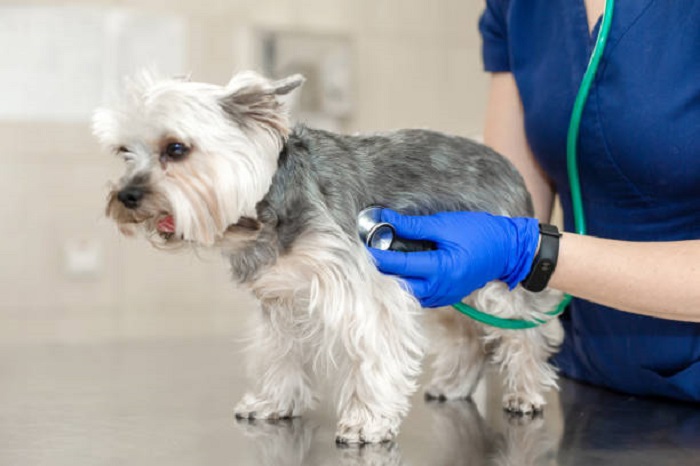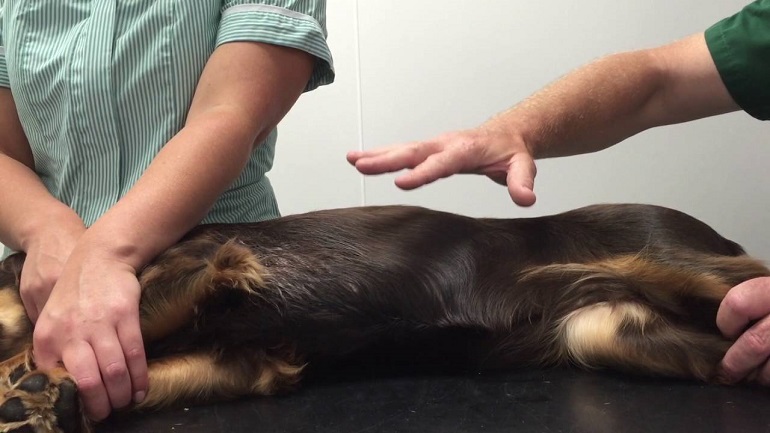A dog’s heart holds the key to their overall health, and understanding their normal heart rate is crucial for any responsible owner. This vital sign, alongside other indicators like respiratory rate and body temperature, provides valuable insights into their well-being. While a resting dog’s heart typically beats faster than a human’s, variations exist based on size, age, and activity level. Knowing the normal range for your dog empowers you to detect potential problems early, ensuring timely veterinary care and a longer, healthier life for your furry companion.
Being aware of a normal dog’s heart rate is essential when looking at the health and well-being of your dog. Dogs are an integral part of many families. They assume the role of a pet, child, friend, colleague, and companion.
I have had dogs since childhood and can’t imagine a life or a household without at least one pup curled up on my spot on the sofa. So making sure I have a healthy pup is important to me, and understanding their normal vital signs is a great place to start.
In this post, we will look at all the key concerns and considerations relating to your dog’s heart rate.
What Are the Normal Vitals for a Dog?
The normal vitals for a dog relate to the key bodily functions that indicate a healthy dog. In many ways, this is very similar to humans. Below are the four key vital signs for your dog.
Body Temperature
The normal body temperature for a dog ranges between 100-102.5 degrees. Much like with people, a dog’s normal temperature can vary; however, should it ever go below 99 or above 104, you should seek veterinary advice and intervention. Always use a rectal thermometer when checking your pooch’s temperature.
Mucous Membrane Color
When the vet checks your pooch’s gums, they are really checking the mucous membrane color. A healthy gum coloration means good blood oxygenation and perfusion. If your pup’s gums ever look blue, white, yellow, or even just paler than normal, schedule a visit with your vet as soon as possible.
Heart Rate
A normal heartbeat for a dog varies depending on the breed. Larger dogs have slower heart rates. Smaller dogs and pups should have a resting heart rate of 120-160 beats per minute. Larger dogs – heavier than 30 lbs – have a resting heart rate of 60-120 beats per minute.
Respiratory Rate
A dog’s respiratory rate is the rate at which it breathes. It is divided into two breath types. Firstly, the normal breathing rate for dogs is anywhere between 10 and 30 breaths per minute. Secondly, the acceptable panting rate for dogs is up to 200 pants per minute.
What Is the Standard Heart Rate for Dogs?
The standard dog’s heart rate varies based on age and breed. Other environmental factors such as weather, location, and activity level also play a part. Below, we will look at the two main separations for the normal range of dog heart rates.
- Puppies: Much like babies, puppies have a higher pulse rate than adult dogs. For pups, the acceptable heart rate should be between 160-200 beats per minute at birth. This can increase to 220 bpm when they reach two weeks before settling back to around 180 beats per minute until adulthood.
- Small Dogs: The smaller the dogs, the quicker their hearts beat. Smaller dogs have a normal heartbeat that should be between 100-140 beats per minute.
- Large Dogs: For larger adult dogs, the normal heart rate is slower, ranging anywhere from 60-100 beats per minute.
If you fear that your pup’s heart rate is lower than usual, you should reach out to your veterinarian and ask them to check your dog’s heart.
Sinus Bradycardia is a potentially serious condition that may cause a dog’s heartbeat to drop significantly.
To find your canine’s heartbeat, place two fingers on the inside of its left side rear leg. This is the best location to reach the femoral artery. Count the number of heartbeats for fifteen seconds and then multiply by four.
As a responsible pet owner, you should know that any concerns regarding your dog’s vital signs call for veterinary intervention.
What Is the Average Body Temperature for Dogs
The average dog’s body temperature is between 100-102.5 degrees (Fahrenheit). Use a digital rectal thermometer when taking your pooch’s temperature. The normal dog temperature for puppies is lower, between 94 and 97 degrees.
While external environmental factors can play a role in your dog’s body temperature, any time you find your dog’s temperature rising above 104 or below 100, you should call your vet.
Both high fever and hypothermia can be serious conditions and require immediate veterinary care.
What Is a Dog’s Normal Respiratory Rate?
The normal dog’s respiratory rate is 10-30 breaths per minute. When a dog is panting, the normal breathing rate rises to 200 panting breaths per minute. While the pant rate is essential, resting respiratory rates are the most revealing vital sign.
When checking your dog’s breathing rate, you should count the number of breaths as they sleep. If you feel your pup is having difficulty breathing, keep a record of its breathing rate.
Difficulty breathing and a change in your dog’s heart rate are signs of a more serious problem, including heart disease.
Why Is the Mucous Membrane Color Important?
The mucous membrane color is important as this is a good indicator of your dog’s circulation rate and various other health points. A healthy mucous membrane color is pink and moist.
Should you find your dog has blue, white, pale, or yellow gums, you should seek emergency veterinary care.
To not get things wrong and panic unnecessarily, it is recommended that you check your pup’s mucous membrane color regularly and get a solid understanding of its normal coloration.
When checking your dog’s teeth and gums, it is essential to assess as much of their mouth as possible rather than just one small section of the gumline.
How Do You Check Your Dog’s Hydration Status?
The best way to assess your dog’s hydration status is to pinch the skin on the top of its head gently. On a well-hydrated canine, the skin will quickly spring back into place.
While there are other symptoms of dehydration in your dog, the skin pinch method is a quick, easy and reliable method. On average, your dog should drink 28-48ml of water per day per kg of body weight.
Conclusion
While it is important to check your dog’s heart rate, it is essential to understand that there is more to keeping your dog healthy than just monitoring its heart rate.
Suppose your canine friend starts showing any sickness symptoms, such as coughing, difficulty breathing, blood loss, or otherwise seems to be of ill health. In that case, you should call your veterinarian and get them treatment as soon as possible.
Monitoring your dog’s heart rate is a simple yet crucial aspect of responsible pet ownership. A normal resting heart rate varies depending on size, breed, and age, but typically falls between 70 and 160 beats per minute. Regularly checking this vital sign, along with other indicators like respiration and temperature, can help you detect potential health issues early. Familiarizing yourself with your dog’s baseline allows for quicker identification of abnormalities and prompts timely veterinary attention, contributing significantly to their overall health and well-being.






